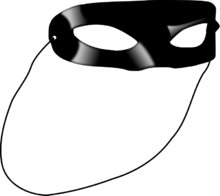이스티오닥틸루스과
Istiodactylidae| 이스티오닥틸리드 | |
|---|---|
 | |
| 스테고사우루스 시체를 먹고 사는 이스티오닥틸루스 반딧불의 생명 회복. | |
| 과학적 분류 | |
| 왕국: | 애니멀리아 |
| 문: | 챠다타 |
| 주문: | †익룡류 |
| 서브오더: | †프테로닥틸로이드상과 |
| Clade: | †랜소돈티아 |
| Clade: | †이티오닥틸류 |
| 패밀리: | †이스티오닥틸루스과 Howse, Milner & Martill, 2001 |
| 모식종 | |
| †오니토데즈무스 헐리, 1913년 | |
| 속 | |
익룡과(Istiodactylidae)는 익룡의 작은 과이다.이 과는 2001년 이스티오닥틸루스 모식속(Istiodactylus)이 Ornithodesmus속(Ornithodesmus)에 속하지 않는 것이 발견됨에 따라 붙여졌다.
계통학 및 배포
백악기 전기(바레미아기~압티안기)[2]의 암석에서는 이스티오닥틸라과로 분류할 수 있는 분류군의 유적이 영국과 중국에서 발견됐다.Arbour and Currie(2011)는 캐나다산 Guwinapterus beardi가 백악기 후기([3]캄파니안 상부)에 살았던 Istiodactylidae의 일원인 것으로 기술했지만, Witton(2012)은 이 동물의 치아 교체 패턴이 익룡과 일치하지 않아 익룡이 [2]아닐 수 있음을 시사했다.추가적인 연구는 그 종이 사실 [4]물고기였다는 것을 암시했다.가장 먼저 알려진 종은 중국 [5]쥐라기 중기의 시조이스토이오닥틸루스 링롱타엔시스일 수 있다. 그러나 이 종의 완모식표본은 실제로 잘 보존되지 않은 다윈옵테루스의 [6]표본일 수도 있다는 주장도 제기되어 왔다.중국에서 온 것으로 추정되는 이티오닥틸류인 홍산옵테루스는 위톤(2012)[2]에 의해 계통학적 위치가 불확실한 오르니토케이로아과의 비이티오닥틸류 구성원으로 재분류되었다.
이스트오닥틸리드는 오리와 비슷한 납작하고 둥근 턱을 가진 중간 크기의 익룡이었다.그러나 그들은 턱에 작은 이빨을 늘어뜨리고 있었고, 이것은 주로 Istiodactylus와 [7]같은 더 발달된 속들에서 볼 수 있다.
분류
아래는 Andres와 Myers(2013)[8]의 프테라노돈티아 내에서의 이 그룹의 계통학적 배치를 보여주는 분해도이다.
| 프테라노돈티아 |
| |||||||||||||||||||||||||||||||||||||||||||||||||||||||||||||||||||||||||||||||||||||||||||||||||||||||||||||||||||||||||||||||||||||||||||||
아래 분해도는 켈너 외 연구진(2019)이 복구한 위상이다.이 분석에서 그들은 보다 포괄적인 그룹인 Istiodactyliformes 내에서 Istiodactylidae를 회수하고 Istiodactylus와 Liaoxipterus를 Istiodactylinae라는 새로운 아과로 지정했지만 Nurhachius는 기초 [9]멤버로 유지했다.
| 이티오닥틸류 |
| ||||||||||||||||||||||||||||||
고생물학
라이프스타일
대부분의 오르니토케이로이드와 달리, 이티오닥틸리드는 육생에 적합한 생리를 가지고 있으며 많은 화석들이 담수 퇴적물에서 발견되었다.이스트오닥틸리드는 독수리와 같은 익룡류의 동물로 여겨진다. 즉, 그들이 살던 곳에서 청소부 역할을 하는 것이다.물을 좋아하는 익룡처럼 이티오닥틸리드가 헤엄칠 수 있을지는 미스테리로 남아 있다.
레퍼런스
- ^ 혼, 데이비드 W.E., 피치, 아담 J., 마, 페이민, 쉬, 싱.2020. 거의 완전한 표본을 바탕으로 중국에서 온 특이한 익룡의 새로운 속.Palaeontologia Electronica 23 (1) : a09 . https://doi.org/10.26879/1015
- ^ a b c Mark P. Witton (2012). "New Insights into the Skull of Istiodactylus latidens (Ornithocheiroidea, Pterodactyloidea)". PLOS ONE. 7 (3): e33170. Bibcode:2012PLoSO...733170W. doi:10.1371/journal.pone.0033170. PMC 3310040. PMID 22470442.
- ^ Arbour V.M.; Currie P.J. (2011). "An istiodactylid pterosaur from the Upper Cretaceous Nanaimo Group, Hornby Island, British Columbia, Canada". Canadian Journal of Earth Sciences. 48 (1): 63–69. Bibcode:2011CaJES..48...63S. doi:10.1139/E10-083.
- ^ Vullo R.; Buffetaut E.; Everhart M.J. (2012). "Reappraisal of Gwawinapterus beardi from the Late Cretaceous of Canada: a saurodontid fish, not a pterosaur". Journal of Vertebrate Paleontology. 32 (5): 1198–1201. doi:10.1080/02724634.2012.681078. S2CID 129180570.
- ^ Lü J.; Fucha X. (2010). "A new pterosaur (Pterosauria) from Middle Jurassic Tiaojishan Formation of western Liaoning, China". Global Geology. Z1: 113–118.
- ^ David M. Martill & Steve Etches (2012). "A new monofenestratan pterosaur from the Kimmeridge Clay Formation (Upper Jurassic, Kimmeridgian) of Dorset, England". Acta Palaeontologica Polonica. in press. doi:10.4202/app.2011.0071.
- ^ Witton, Mark P. (2012). "New Insights into the Skull of Istiodactylus latidens (Ornithocheiroidea, Pterodactyloidea)". PLOS ONE. 7 (3): e33170. Bibcode:2012PLoSO...733170W. doi:10.1371/journal.pone.0033170. PMC 3310040. PMID 22470442.
- ^ Andres, B.; Myers, T. S. (2013). "Lone Star Pterosaurs". Earth and Environmental Science Transactions of the Royal Society of Edinburgh. 103 (3–4): 1. doi:10.1017/S1755691013000303. S2CID 84617119.
- ^ Kellner, Alexander W. A.; Caldwell, Michael W.; Holgado, Borja; Vecchia, Fabio M. Dalla; Nohra, Roy; Sayão, Juliana M.; Currie, Philip J. (2019). "First complete pterosaur from the Afro-Arabian continent: insight into pterodactyloid diversity". Scientific Reports. 9 (1): 17875. Bibcode:2019NatSR...917875K. doi:10.1038/s41598-019-54042-z. PMC 6884559. PMID 31784545.

















